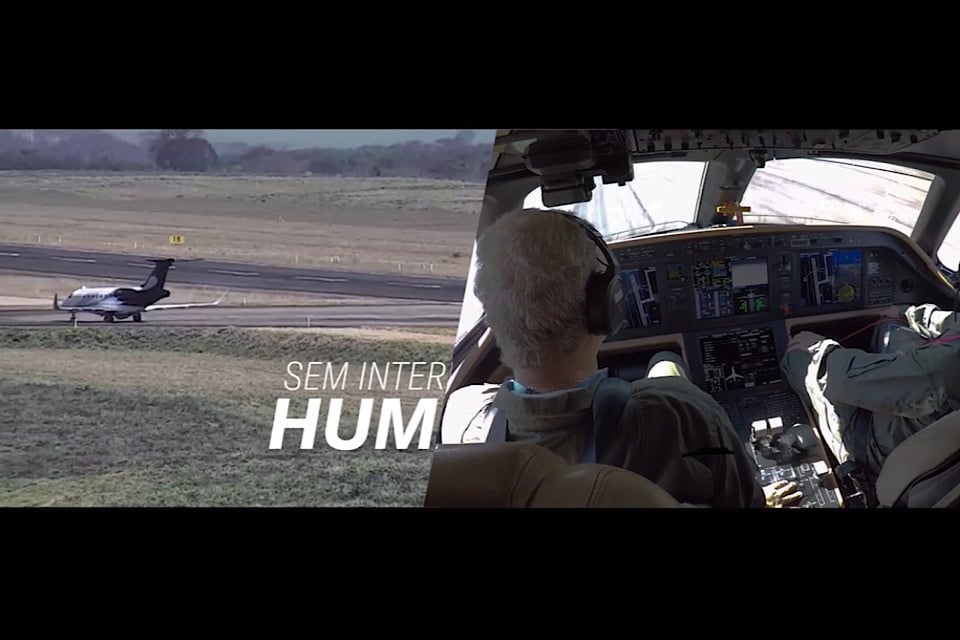Aviation
The Embraer aircraft perform the taxiing operation on its own ?

São José dos Campos – SP, October 8, 2019 – A scientific and technological cooperation between Embraer and the Universidade Federal do Espírito Santo (Ufes), in the areas of autonomous robotics and artificial intelligence resulted in the first test of an autonomous aircraft in Brazil. The successful initiative made it possible for a prototype to perform the taxiing operation on its own, moving along a previously established path without human interference.
Watch the autonomous aircraft test video here:
https://vimeo.com/364414355/f1e2fdde7d
The sensor and image navigation set led the autonomous systems technology demonstration aircraft through the runway, taxi area and patio independently, without outside assistance. A pilot followed the cockpit operation in case of any interference. The test took place in the last week of August, at Embraer unit in Gavião Peixoto, in São Paulo state.
For the past six months, researchers from Embraer and Ufes have worked together on mathematical and computational models of automation, software development, hardware, laser sensor kit, GPS and cameras, as well as systems integration into the aeronautical platform. The autonomous land navigation system was tested in a simulator during preliminary assessments prior to actual operation.
The integrated artificial intelligence system monitored the aircraft’s external and internal conditions, which acts independently on the acceleration, steering and braking commands, and accurately performed the movement along the indicated path. The test aircraft platform – the same one used for the development of the modern executive jets Legacy 500 and Praetor 600 – integrated features of the Intelligent Autonomous Robotic Automobile (IARA) system, result of an autonomous cars’ research that began in 2009, at the Ufes High Performance Computing Laboratory (LCAD).
12 things to know about Airbus A320 family
“This success demonstrates the excellence of what we have been developing at Ufes in the last 10 years in the areas of autonomous vehicles and artificial intelligence. It puts us once again at the scientific forefront in these areas worldwide. Doing all this in partnership with Embraer fills us with pride and satisfaction”, said Professor Alberto Ferreira de Souza, project coordinator
Airbus concludes ATTOL with fully autonomous flight tests

Aviation
COMAC Unveils Plans for the C929 to Rival Airbus and Boeing

After the success of China’s first C919 aircraft, the country is setting its sights on developing a larger plane. COMAC (Commercial Aircraft Corporation of China) has officially confirmed plans to build a widebody aircraft, marking a significant step in its aircraft lineup.
Traditionally, Airbus and Boeing dominate the widebody aircraft market, with decades of expertise in developing planes and engines capable of carrying heavy payloads. China, which currently relies on imported engines, is now aiming to challenge these giants with its own widebody jet, the C929, designed to compete with the Airbus A350 and Boeing 777.
American Airlines Is Looking for Flight Attendants: Apply Now
The C929 will be China’s first independently developed long-range widebody aircraft. It adheres to international airworthiness standards and boasts independent intellectual property rights. The baseline version is designed to seat 280 passengers and offers a range of 12,000 kilometers, catering to global demand for both regional and international air travel.
Russia, which also needs reliable narrowbody and widebody aircraft, could become a key customer for the C929. Additionally, China plans to target the broader Asian market as it continues to expand its aviation capabilities.
Close Call at Heathrow: BA Flight Narrowly Escapes Drone Collision
China’s aviation progress includes the ARJ21 (now called C909), a regional jet with 100 seats for shorter routes, and the C919, a narrowbody jet with 180 seats designed to rival the Boeing 737 MAX and Airbus A320. Both models have found increasing demand in the domestic market.
At China’s largest air show in Zhuhai, COMAC announced that Air China will be the launch customer for the C929 widebody jet, though details about order size and delivery timelines were not disclosed.
Other major deals announced by COMAC include:
- Hainan Airlines: Firm orders for 60 C919 and 40 C909 regional jets.
- Colorful Guizhou Airlines: 30 C909 jets, with 20 firm orders and 10 provisional agreements.
The C929, renamed from the CR929 after Russia withdrew from the joint development project in 2023, is expected to carry 280–400 passengers with a range of 12,000 kilometers, competing directly with Boeing’s 787 Dreamliner.
According to COMAC’s deputy general manager, Tong Yu, the first fuselage section of the C929 is expected by September 2027, with prototype test flights anticipated soon after.
-

 Aviation2 months ago
Aviation2 months agoMicrosoft Flight Simulator Raises $3 Million to Bring Back the An-225 Mriya
-

 Airlines2 months ago
Airlines2 months agoQantas Engineers Stage Walkout Over Cost of Living Concerns
-

 Airlines2 months ago
Airlines2 months agoQatar Citizens Can Travel to the United States Without a Visa
-

 Aviation2 months ago
Aviation2 months agoQatar Airways bans these new Electronic Devices on plane
-

 Airlines2 months ago
Airlines2 months agoJapan Airlines Rolls Out Free Domestic Flights to International Passengers
-

 Defence2 months ago
Defence2 months agoWhich Country Has the Largest Fleet of Fighter Aircraft?
-

 Airport2 months ago
Airport2 months agoWestern Sydney Airport Welcomes Its First Plane After 6 Years of construction
-

 Aviation2 months ago
Aviation2 months agoDid you know ? Once Boeing 747 carried 1088 passenger in 1991








